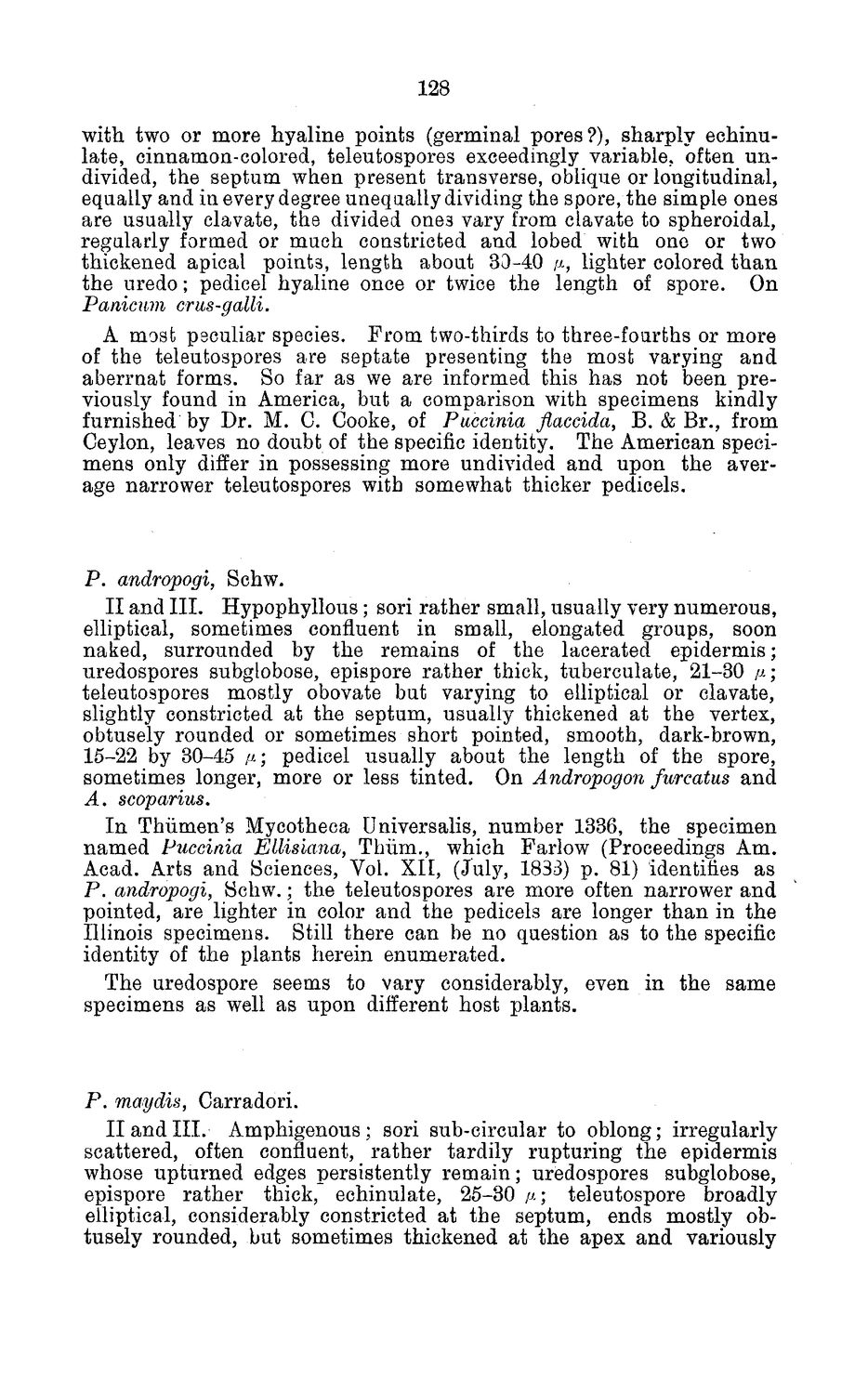| |
| |
Caption: Board of Trustees Minutes - 1884
This is a reduced-resolution page image for fast online browsing.

EXTRACTED TEXT FROM PAGE:
128 with two or more hyaline points (germinal pores?), sharply echinulate, cinnamon-colored, teleutospores exceedingly variable., often undivided, the septum when present transverse, oblique or longitudinal, equally and in every degree unequally dividing the spore, the simple ones are usually clavate, the divided ones vary from clavate to spheroidal, regularly formed or much constricted and lobed with one or two thickened apical points, length about 30-40 ti, lighter colored than the uredo; pedicel hyaline once or twice the length of spore. On Panicum crus-galli. A most peculiar species. From two-thirds to three-fourths or more of the teleutospores are septate preseuting the most varying and aberrnat forms. So far as we are informed this has not been previously found in America, but a comparison with specimens kindly furnished by Dr. M. C. Cooke, of Puccinia flaccida, B. & Br., from Ceylon, leaves no doubt of the specific identity. The American specimens only differ in possessing more undivided and upon the average narrower teleutospores with somewhat thicker pedicels. P. andropogi, Schw. II and III. Hypophyllous; sori rather small, usually very numerous, elliptical, sometimes confluent in small, elongated groups, soon naked, surrounded by the remains of the lacerated epidermis; uredospores subglobose, epispore rather thick, tuberculate, 21-30 n; teleutospores mostly obovate but varying to elliptical or clavate, slightly constricted at the septum, usually thickened at the vertex, obtusely rounded or sometimes short pointed, smooth, dark-brown, 15-22 by 30-45 /*; pedicel usually about the length of the spore, sometimes longer, more or less tinted. On Andropogon furcatus and A. scoparius. In Thiimen's Mycotheca Universalis, number 1336, the specimen named Puccinia Ellisiana, Tbum., which Parlow (Proceedings Am. Acad. Arts and Sciences, Vol. XII, (July, 1833) p. 81) identifies as P. andropogi, Schw.; the teleutospores are more often narrower and pointed, are lighter in color and the pedicels are longer than in the Illinois specimens. Still there can be no question as to the specific identity of the plants herein enumerated. The uredospore seems to vary considerably, even in the same specimens as well as upon different host plants. P. rnaydis, Carradori. II and III. Amphigenous; sori sub-circular to oblong; irregularly scattered, often confluent, rather tardily rupturing the epidermis whose upturned edges persistently remain; uredospores subglobose, epispore rather thick, echinulate, 25-30 n; teleutospore broadly elliptical, considerably constricted at the septum, ends mostly obtusely rounded, but sometimes thickened at the apex and variously
| |